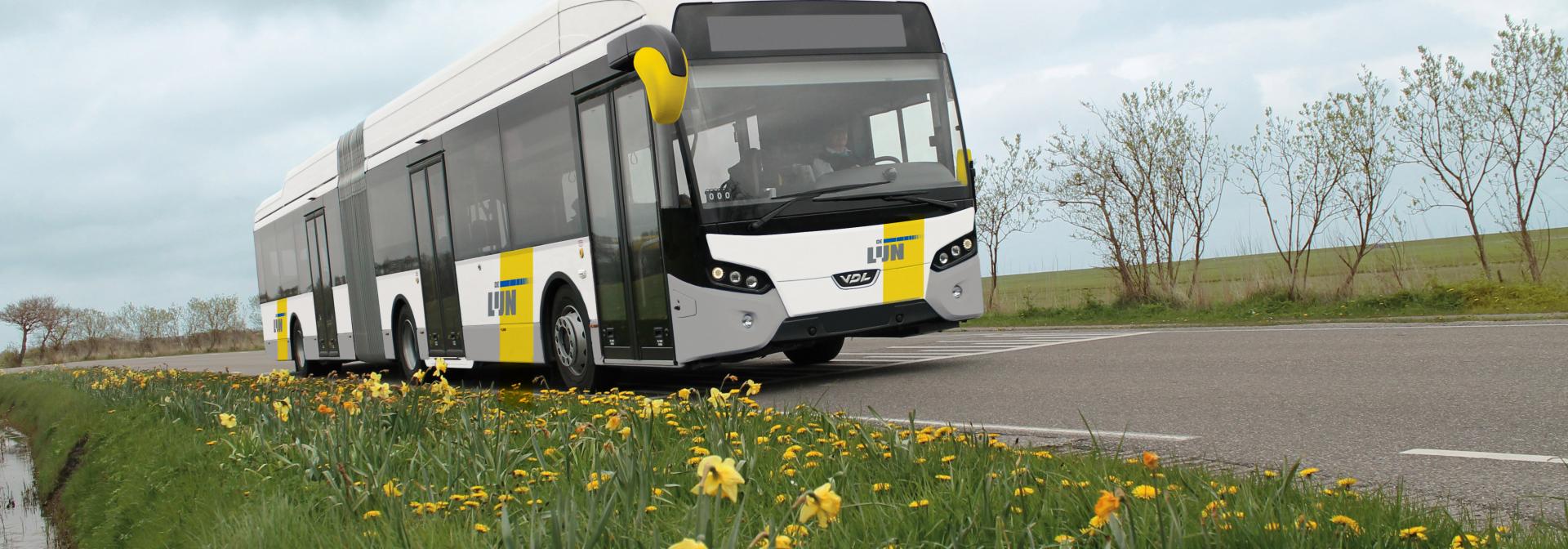
VDL Bus & Coach receives a mega-order for 200 hybrid Citeas from De Lijn
Belgian passenger transport company De Lijn is continuing its good cooperation with VDL and has placed an order for 200 hybrid Citeas. Never before has VDL Bus & Coach received an order of this size from De Lijn. Since 2014, De Lijn has ordered a total of 620 VDL Citeas. The first deliveries of this new order are planned for the second half of 2020 and the buses will operate in various locations throughout Flanders.
“This order is a confirmation of the long-term relationship with De Lijn we have developed over the years,” said Filip Malefason, Managing Director VDL Bus & Coach Belgium nv. “By using hybrid Citeas, De Lijn is contributing to improving the air quality, particularly in urban areas. In combination with the noise reduction the hybrid buses achieve compared to conventional diesel buses, this means improved quality of life for city dwellers. With fully charged batteries the hybrid buses can drive long distances using just electric power, which is particularly beneficial for driving in the low emission zones of the 13 Flemish urban centres.”
Roger Kesteloot, Director General of De Lijn: “This order is the largest in the history of De Lijn. It makes an important contribution to the Flemish air quality and climate objectives. With the introduction of these 200 buses, we will achieve annual reductions of one million litres of diesel and 2,640 tonnes of CO2 emissions.”
New hybrid concept for De Lijn
The new generation of hybrid Citeas was developed based on the experience De Lijn and VDL Bus & Coach have gained with the vehicles delivered in the past. Both the hybrid Low Entry Citea and the hybrid, articulated Low Floor Citea have the same electric powertrain as the Citea Electric. Thanks to a new, compact ‘high-power’ battery technology, these hybrid buses can be used as completely electric buses in areas such as city centres and low emission zones. De Lijn has opted for a high battery capacity, allowing buses with 100% charged batteries to drive up to 30 kilometres fully electrically. All the hybrid buses are supported by a generator that meets the strictest current European environmental standards and can be used to recharge the batteries as required. The batteries can also be charged via a CCS Combo2 charging plug.
In the future, the electric autonomy of the hybrid buses can be further increased by adding a fast charging option. This allows the buses to be charged using a pantograph integrated in the charging infrastructure.
Electrically powered Citeas
The order consists of 80 VDL Citeas SLE-120 Hybrid and 120 VDL Citeas SLFA-180 Hybrid. The 12-metre, low-entry bus is driven by a 160 kW electric motor and equipped with a 32 kWh ‘high-power’ battery pack. The articulated, low-floor bus has a 240 kW electric motor combined with a 64 kWh ‘high-power’ battery pack. All the hybrid buses are also equipped with a 180 hp, 4-cylinder, Euro 6 generator that can charge the battery. Thanks to the combination of a serial hybrid system and a technically advanced battery pack, the new generation of hybrid Citeas can drive electrically more than half the time.
VVM De Lijn
De Lijn is the Flemish public company that provides public transport by bus and tram in Flanders. Approximately 3.5 million people use De Lijn's services one or more times per year.
For its operation, the transport company receives an allocation from the Flemish Region, the main shareholder. The sale of tickets is the second source of income.
The De Lijn network comprises approximately 1,000 lines and 36,000 stops. All in all, the buses and trams provide around 11 million passenger journeys per year. Its own fleet consists of 2,250 buses and 400 trams. The private companies that operate on behalf of De Lijn also have their own buses. They account for half of the bus kilometres.
With over 8,000 employees, De Lijn is one of the largest employers in the country. The private operators employ a further 2,000 people. As main shareholder of the Blue-bike bikeshare company, De Lijn promotes and supports combi mobility. This allows passengers to combine a bus or tram ride with a shared bike for the last part of their journey.
